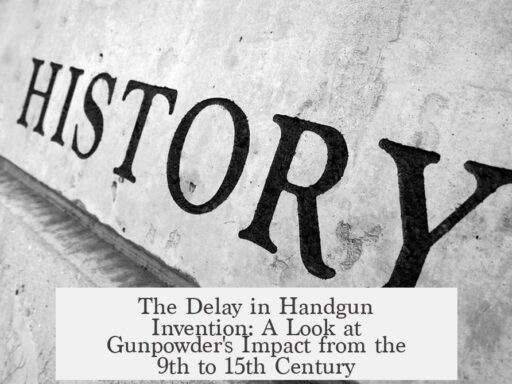The pendulum as a fantastical execution device gained popularity mainly due to Edgar Allan Poe’s 1842 short story, “The Pit and the Pendulum.” Poe describes a prisoner subjected to a slow, bladed pendulum descending toward him, set in the Spanish Inquisition era. This vivid depiction cemented the pendulum’s place in gothic and fantasy fiction.
The story draws inspiration from the 1817 book “The History of the Inquisition of Spain” by Juan Antonio Llorente. Within the book, a paragraph references a bladed pendulum used for torture, attributed to a former prisoner. Historians suspect this pendulum motif may have been misunderstood or fictionalized rather than historically accurate. However, Poe adopted and dramatized this concept, enhancing its appeal.
Poe’s reputation as a master of gothic horror plays a key role in the pendulum’s enduring presence. His short story reached a wide audience and influenced many writers, filmmakers, and artists. Over time, adaptations of “The Pit and the Pendulum” in cinema further reinforced this trope, often portraying the pendulum as a slow, suspenseful death mechanism.
- The pendulum symbolizes impending doom and relentless passage of time, common themes in gothic fiction.
- Its physical design—a large swinging blade—provides visual and narrative tension that appeals to audiences.
- The device conforms to gothic aesthetics, combining medieval torture imagery with psychological terror.
These elements explain why the bladed pendulum remains a common fixture in stories featuring dungeons or death traps. It blends physical danger with dramatic suspense, making it a powerful symbol of inevitable fate in fantasy and gothic genres.
Its repeated use in modern fiction and media reflects both Poe’s influence and the pendulum’s effectiveness as a storytelling device. The cliché persists because it taps into deep fears related to time, death, and helplessness.
- Originates from Poe’s 1842 story, inspired by earlier Inquisition accounts.
- Likely fictional or misunderstood as a real torture method.
- Poe’s literary prestige boosted the pendulum’s popularity.
- Film adaptations cemented its iconic status.
- Represents gothic themes of doom, time, and fear.
The Swinging Pendulum: From Poe’s Pen to Gothic Pop Culture Staple
Why does the image of a swinging, bladed pendulum slowly descending on a victim strapped to a table remain a classic in gothic and fantasy fiction? The answer spins back to one man: Edgar Allan Poe. His 1842 short story, The Pit and the Pendulum, didn’t just inspire dread—it carved the pendulum into the very fabric of dark storytelling.
Imagine this: a bound prisoner lies helpless in the oppressive grasp of the Spanish Inquisition. Above him, a sharp pendulum swings, slicing closer with each terrifying arc. This vivid and haunting tableau seized readers’ imagination like no other.
Edgar Allan Poe: The Mastermind Behind The Macabre
Poe’s The Pit and the Pendulum remains a cornerstone of gothic horror. Why? Because it distilled fear and suspense into a simple yet chilling device: a colossal, bladed pendulum meant to slowly carve the prisoner into oblivion before delivering a swift demise. Poe’s genius wasn’t just in the horror; it was in the suspense, the slow descent of doom, and the inescapable terror.
This tale takes place during the Spanish Inquisition, a brutal period infamous for inhumane punishments and torture. Fascinatingly, Poe never reveals the protagonist’s name or crime. This anonymity heightens the universal fear of arbitrary suffering, making the pendulum an emblem of fatal inevitability.
Where Did Poe’s Pendulum Idea Come From?
Before Poe’s story sliced into the public consciousness, a less dramatic mention of a pendulum torture device appeared, thanks to Juan Antonio Llorente. Llorente, a Spanish priest and historian, published The History of the Inquisition of Spain in 1817. Within its pages is a brief, somewhat ambiguous account of a prisoner subjected to a deathly pendulum.
However, historians suspect this description was either a tall tale or a confused report of some other torture method. Whether fact or fiction, this snippet provided Poe with a seed for his dark imagination to grow the story that would come to define the pendulum’s place in fiction.
Why Has Poe’s Pendulum Endured in Modern Gothic and Fantasy Fiction?
The pendulum’s popularity didn’t fade after Poe’s time; it gathered steam through adaptations and echoed in countless gothic and fantasy works.
- First, Poe’s prestige matters. Poe’s work shaped the gothic genre at its core. The pendulum’s deadly swing is now a hallmark of terror and suspense, instantly recognizable and loaded with narrative tension.
- Second, films and adaptations helped cement its icon status. From classic black-and-white horror movies to modern fantasy series, the pendulum traps appear in dungeons and villain lairs, reinforcing fears of slow, inescapable doom.
- Third, the pendulum’s symbolism fits well in gothic and fantasy themes. It blends mechanics with menace, evoking both human ingenuity and cruelty. The slow, rhythmic movement towards peril is a powerful metaphor for fate and time slipping away.
- Finally, it simply looks dramatic. The visual of a massive blade swinging just above the trembling victim’s chest amps suspense. Writers and directors love this scene because it’s straightforward yet delivers goosebumps.
Lessons and Quirks About the Pendulum’s Role in Fiction
Ever wonder why the pendulum descends slowly? It’s the pacing. Slow motion adds dread. The victim’s anxiety grows with every swing, making readers or viewers hold their breath. The threat is mechanical, lethal, and relentless—a perfect recipe for psychological horror.
And let’s be honest, the pendulum as an execution device has a bit of theatrical flair. Real-world medieval torture devices rarely looked so focused on suspenseful artistry. This distinction fuels debates about historical accuracy versus story-telling impact.
“The pendulum’s menacing dance is less about historical fact and more about evoking raw emotion – fear, suspense, and the primal fight for survival.”
How to Spot the Pendulum Trope and What Makes It Tick
If you enjoy gothic and fantasy fiction, spotting this trope is like playing a fun “gotcha” with authors. The pendulum often emerges in scenes of inescapable peril, hidden dungeons, or dark castles. It usually signals that the hero or victim must use wit, agility, or a lucky break to survive.
Does this trope appear only in gothic horror? No. It sneaks into fantasy epics, steampunk adventures, and even some science fiction settings where old-fashioned traps puzzle the tech-savvy heroes.
Practical Takeaways for Writers and Fans
- For writers: Use the pendulum trap to build slow-burning tension. It works best when readers deeply empathize with the victim.
- For fans: Next time you read a gothic horror or fantasy story, notice how the pendulum scene doubles as a metaphor—highlighting time running out and looming doom.
- For both: Appreciate how Poe’s legend shaped this iconic trope, turning what might have been a brief mention in a history book into a cornerstone of terror.
In Conclusion: Why Does the Pendulum Still Swing?
The bladed pendulum, immortalized by Poe’s The Pit and the Pendulum, isn’t just a torture device. It’s a timeless symbol of dread that slices into our psyche. Its slow descent embodies suspense itself—reminding us that death, like time, is inevitable and unforgiving.
So next time you see a pendulum swing menacingly toward a captive, remember—it’s not just a cliché. It’s a story element with deep roots in gothic tradition, horror history, and the collective love of suspense. And who knows? The next trapdoor might just be waiting for its own slow, slicing blade.


